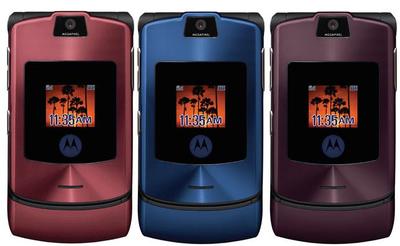Familiar as an old shoe

You know, after I have a pair of shoes for a while, I start to get really attached to them. Even if at the beginning I wasn't sure, after a while I like how they fit, I like how they look, and generally I'm happy with what I have. That's why it always bugs me that shoe styles change so quickly. I wear the shoes for a year or so, then go off to get a new pair, and can never find them again.
Ever notice that for as much as the iPod has changed, it's still pretty much the same basic size and shape and uses the same interface? It's funny in our minds eye, iPods almost haven't changed at all, yet when you hold an older iPod next to a new one, you can immediately see how the original design has aged. But Apple didn't mess with a good thing - they improved the stuff that people didn't like, while sticking with a familiar shape and functionality that people love. This is the same for many successful products out there, especially ones that were very innovative and new when they were launched - paradoxically it seems that sense of newness doesn't leave for a long time, even when the products themselves get older. Remember how long the Palm V design lasted? My god, it was half a decade before that thing started looking dated.
I mention these things because I think the mobile phone industry has been changing styles a bit too fast. Carlo and others wondering this morning whether the RAZR is another Star*tac in that maybe Moto can't figure out a great follow on product, but I think they're just being smart. If the phone is the number one seller in Europe and the U.S. despite an insanely clunky UI and other problems, they must be getting something right. Where is it written that you have to change styles so fast? Why mess with what works too quickly? The newer models look the same, but have incremental technological improvements such as music and 3G etc. This makes sense, as the original design is as much a winner today as it was in 2004 when Moto first launched it. Complaining about the lack of big technological improvements is one thing, but complaining about the design is like judging the styles in Milan... who knows what will be popular, not us mobile geeks, that's for sure.
My guess is that no one likes to own a phone that looks dated, so by launching incremental improvements you don't alienate previous customers. They'll upgrade when there's a new improvement that they've wanted for a while, and new customers will feel good getting a handset that all their friends have. Phones are so personal - like your shoes - that you *want* to get used to them. This was the key to Nokia's earlier success as well - they figured out what people liked (no antenna and the Navi-key interface) and sold that over and over again. The then moved to Series 40 phones, and did the same thing. Motorola is just repeating that same successful formula I think. I've had an s60 phone for years now and its so comfortable to me that when I try other phones it always feels awkward, even if there are some things about the new phone that I like and work better than an S60. Ever hear a person moan and bitch when they switch from one handset manufacturer to another and have to get used to a new way of using their phone? This is what I'm talking about, and this I think is the key to the RAZRs continuing success.
Now, there's *a lot* of mobile customers out there (2+ billion as we all know) and in order to sell to them all, you need to have a variety of styles because tastes vary slightly from person to person around the world. But again, is having 50 different models (or more) like Samsung is doing really benefiting them, or is it just causing customer confusion and style-whiplash? I think there's a certain pace that needs to be discovered in the mobile handset consumer market, and a new style every few months probably is too fast.
By the way, I love pointing out when I was right here, but I'll point out when I was wrong as well. I wrote back in 2004 that Nokia should "Innovate on the Inside" where I recommended that they focus on smart phone functionality, technical improvements and plainer styling. Very little of what I wrote in that has turned out to be right, except the move away from wacky keypad layouts. The idea that handset manufacturers needed to push the User Interface and other technical improvements over physical styling was way off. Completely and totally wrong, actually, as the RAZR has explicity shown - everyone, and I mean *everyone*, complains about that phone's user interface, but its still the number one phone out there because of its great industrial design.
That said, I think there is an underlying frustration with the RAZR that Moto hasn't addressed yet, and that definitely worries me. But in general, I'm happy to see that big manufacturers like Nokia and Moto are slowing down a bit on newer model designs. Once people can get used to their phones, we might be able to convince them to start using them more.
-Russ